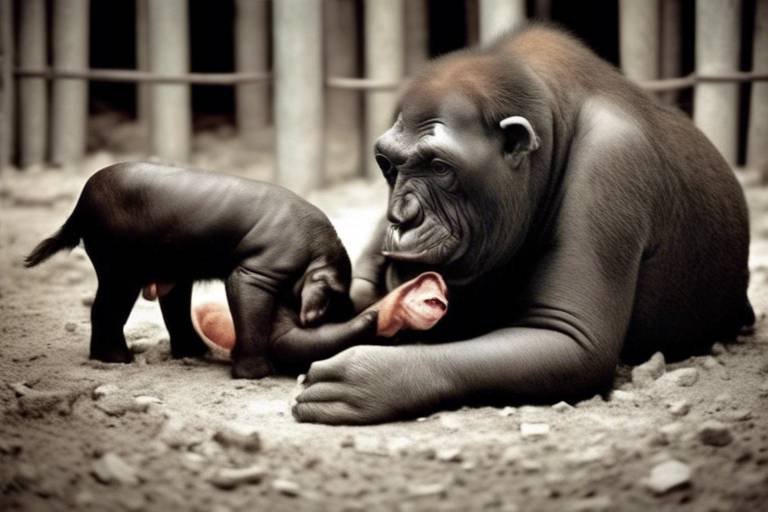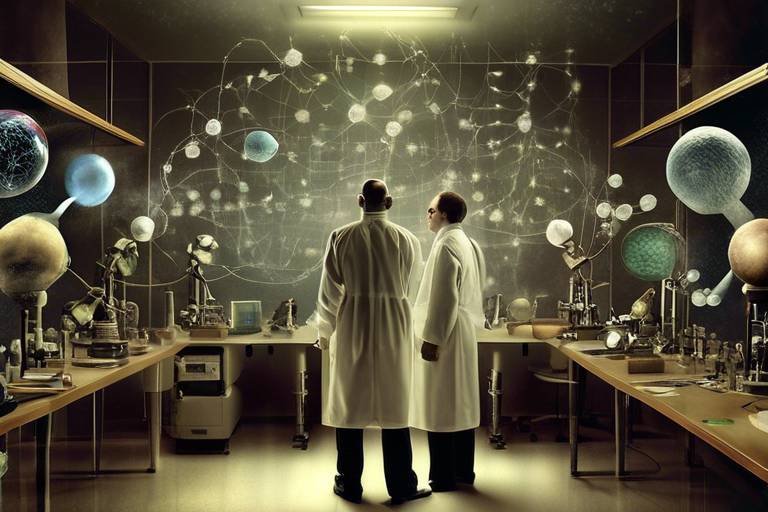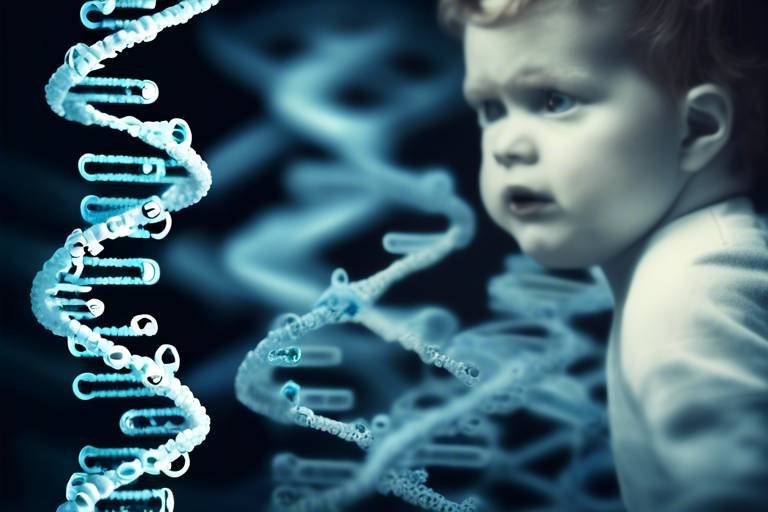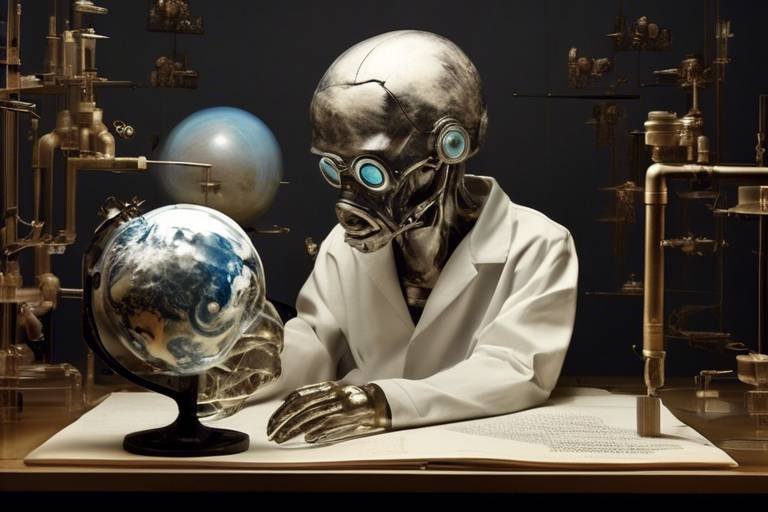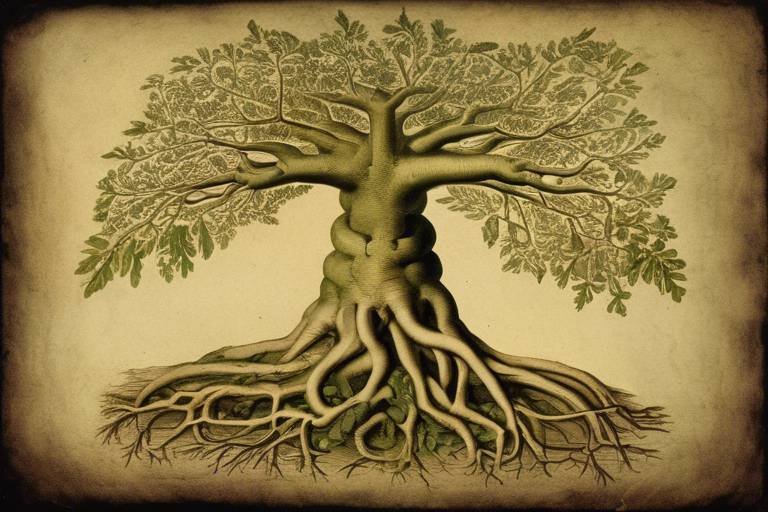Is Probability a Matter of Chance or Certainty?
When we think about probability, we often find ourselves caught in a whirlwind of questions. Is it merely a game of chance, or does it hold the key to certainty in our decision-making? This article embarks on a fascinating journey through the intricate world of probability, aiming to unravel its complexities and shed light on its implications across various domains. From the seemingly random nature of life to the structured calculations that guide our choices, probability serves as both a compass and a puzzle. By the end of this exploration, you may find yourself pondering: is probability just a roll of the dice, or is there a deeper certainty lurking beneath the surface?
Probability, at its core, is a mathematical concept that quantifies the likelihood of an event occurring. Think of it as a way to measure uncertainty in a world that is often unpredictable. For instance, when you flip a coin, there are two possible outcomes: heads or tails. The probability of landing on heads is 50%. This simple example illustrates how probability can guide decision-making and risk assessment in our daily lives. Understanding probability isn't just for mathematicians; it’s a tool that everyone can use to navigate the uncertainties of life.
Now, let’s dive into the heart of the matter: the fundamental differences between chance and certainty. Chance refers to the unpredictable nature of events, while certainty implies a guaranteed outcome. In the realm of probability, chance is often represented by random variables and distributions, while certainty can be seen in deterministic models. Consider this analogy: if life were a game of poker, chance would be the cards you are dealt, while certainty would be the winning strategy you develop over time. Understanding how these concepts interplay can significantly influence our perceptions and outcomes in everyday life.
Randomness is the bedrock of chance. It introduces an element of surprise into our lives, making things unpredictable and exciting. However, randomness can also be a source of confusion. For example, when we toss a coin, we expect a 50/50 chance of heads or tails, but what happens when we flip it ten times? We might get five heads and five tails, but we could also end up with seven heads and three tails. This unpredictability is what makes randomness so fascinating! It affects probability in ways we often overlook, leading us to question our understanding of events.
Natural phenomena often exhibit randomness. Think about the weather: forecasters use probability to predict sunny days or thunderstorms, but there’s always a chance they could be wrong. Factors like wind patterns, humidity, and temperature create a chaotic system where outcomes can shift dramatically. Here are a few examples of random events in nature:
- Earthquakes: Their occurrence is unpredictable, but scientists use probability to assess risk in certain regions.
- Animal Behavior: The migration patterns of birds can seem random, yet they follow certain probabilistic trends.
- Genetic Variation: In biology, the likelihood of inheriting traits is determined by random genetic combinations.
Humans often struggle to comprehend randomness, which leads to cognitive biases that skew our perception of probability. We might assume that if an event has happened several times in a row, it’s less likely to happen again—this is known as the gambler's fallacy. For example, if a coin lands on heads five times in a row, many people might believe tails is "due" to occur next. This misunderstanding highlights the importance of education in probability and randomness, as it can significantly impact our decision-making processes.
On the flip side, certainty refers to situations where outcomes are predictable and can be calculated with confidence. This is particularly evident in controlled environments, such as scientific experiments or mathematical models. For example, if you know the odds of winning a game are 1 in 10, you can make informed decisions based on that certainty. In many cases, probability can lead us to certain outcomes, especially when we have enough data to support our predictions. This clarity can empower individuals to make better choices, whether in finance, healthcare, or personal life.
The applications of probability are vast and varied, penetrating multiple fields such as finance, science, and healthcare. By employing probability models, professionals can make informed decisions that significantly impact their outcomes. Let’s explore how probability is utilized in different sectors.
In the finance world, probability is crucial for assessing risks and returns. Investors rely on probability to gauge the likelihood of market fluctuations and potential gains. For example, when analyzing stocks, investors may use historical data to calculate the probability of a stock's price increasing or decreasing. This strategic approach helps them make informed decisions about where to allocate their resources.
In the field of medicine, probability plays a pivotal role in predicting health outcomes. Medical professionals utilize probability to assess risks associated with treatments and diseases. For instance, they might calculate the probability of a patient responding positively to a particular medication based on clinical trial data. This application of probability not only enhances patient care but also aids in developing new treatment protocols.
- What is probability? Probability is a measure of the likelihood that an event will occur, expressed as a number between 0 and 1.
- How is probability used in everyday life? Probability helps us make informed decisions, from weather forecasting to gambling and investing.
- Can probability predict the future? While probability can indicate the likelihood of events, it cannot guarantee outcomes due to the inherent randomness of life.
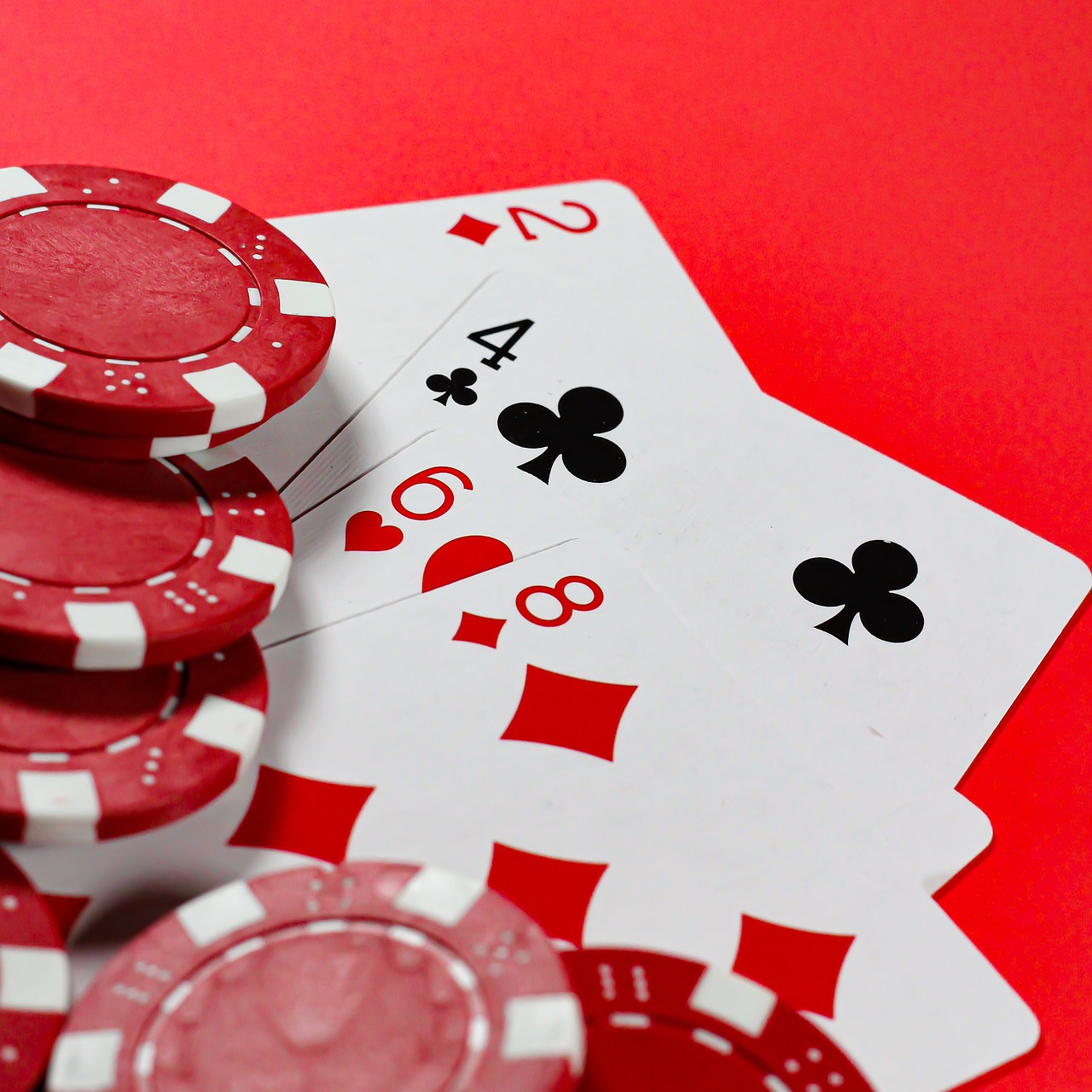
Understanding Probability
Probability is a fascinating mathematical concept that quantifies the likelihood of an event occurring. Imagine you're flipping a coin. The chance of it landing on heads or tails is a classic example of probability in action. In essence, probability provides a numerical measure of uncertainty, helping us navigate the unpredictable nature of life. It’s like having a compass in a dense forest; it guides us through the fog of uncertainty, allowing us to make informed decisions.
To truly grasp the significance of probability, it’s essential to understand its core definition. Probability is expressed as a number between 0 and 1, where 0 indicates impossibility and 1 signifies certainty. For instance, the probability of rolling a six on a fair die is 1 in 6, or approximately 0.1667. This mathematical framework not only helps in predicting outcomes but also plays a crucial role in decision-making and risk assessment across various domains.
When we apply probability to real-world situations, it becomes a powerful tool. For example, businesses utilize probability to forecast sales and manage inventory, while scientists rely on it to analyze experimental data and draw conclusions. In essence, probability acts as the backbone of decision-making processes, allowing individuals and organizations to weigh risks against potential rewards. It's like playing a game of poker; understanding the odds can mean the difference between winning big or going home empty-handed.
Furthermore, the significance of probability extends beyond mere numbers. It influences our daily lives in ways we often don't realize. From weather forecasts to insurance premiums, probability shapes our perception of risk and uncertainty. Consider how we might decide whether to carry an umbrella based on the probability of rain—this simple act illustrates the profound impact probability has on our choices. In this way, probability is not just a mathematical abstraction; it is a practical tool that helps us navigate the complexities of life.
In summary, understanding probability is essential for making informed decisions in an uncertain world. By quantifying the likelihood of events, we gain insights that empower us to act wisely, whether in finance, healthcare, or everyday choices. As we continue to explore the nuances of probability, we will uncover how it intertwines with the concepts of chance and certainty, ultimately shaping our understanding of the world around us.

Chance vs. Certainty
When we talk about probability, we often find ourselves navigating the intriguing waters of chance and certainty. These two concepts, while seemingly straightforward, are like the two sides of a coin—each influencing our understanding of events in different ways. Chance represents the unpredictable, the unexpected twists of fate that can lead to surprising outcomes, whereas certainty embodies predictability, the assurance that certain outcomes will unfold in a specific manner. But how do these two forces interact in our daily lives?
Imagine you're playing a game of dice. The outcome is uncertain; you can roll a one, a six, or anything in between. This is where chance takes center stage. The randomness of the dice roll introduces an element of surprise, and no matter how many times you play, the outcome remains unpredictable. On the other hand, if you were to flip a coin, you might think you have a 50/50 chance of landing heads or tails. However, if you were to flip that coin repeatedly, you might start noticing patterns, leading you to feel a sense of certainty about the eventual distribution of heads and tails.
In everyday life, we constantly grapple with these concepts. For instance, when planning a picnic, you might check the weather forecast. While the forecast gives you a probability of rain, the actual weather can still surprise you. This uncertainty can lead to a cancellation, a last-minute scramble for umbrellas, or even a spontaneous adventure in the rain! Hence, understanding the difference between chance and certainty can significantly impact our decision-making processes.
To further illustrate this, let’s consider a few key distinctions:
- Chance is inherently unpredictable. It encompasses scenarios where outcomes are influenced by random events.
- Certainty arises from a clear understanding of conditions and variables, leading to predictable outcomes.
- In many cases, chance can lead to uncertainty, while certainty can provide a sense of security in decision-making.
In essence, chance and certainty are intertwined in a complex dance that shapes our perceptions and experiences. Understanding this relationship allows us to navigate the unpredictable nature of life with a bit more clarity. So, the next time you find yourself faced with a decision, ask yourself: Are you leaning more towards the thrill of chance, or are you seeking the comfort of certainty?

The Role of Randomness
When we think about probability, one of the first ideas that come to mind is randomness. It's that unpredictable twist of fate that can make or break a situation. Imagine tossing a coin; it lands either heads or tails. You might feel like you have a 50/50 chance, but what if I told you that the outcome is influenced by the tiniest factors—like the angle of your toss or the wind? This is where randomness steps in, and it plays a crucial role in shaping our understanding of probability.
Randomness isn’t just a quirky aspect of life; it’s a fundamental principle that governs many events in nature and human behavior. Think about it: we often rely on patterns to make sense of the world. However, randomness can throw a wrench in our plans and expectations. It’s like trying to predict the weather; despite all the advanced technology at our disposal, the forecast can still be wildly inaccurate. This unpredictability is at the heart of randomness, affecting everything from daily decisions to major life choices.
In essence, randomness introduces a layer of uncertainty that can be both thrilling and daunting. It can lead to unexpected outcomes, and sometimes, it can feel like a game of chance. To illustrate this, let’s consider a few examples:
- Lottery Draws: Winning the lottery is purely a matter of chance. Each number drawn is random, and your chances of winning are slim, despite the dreams it can inspire.
- Weather Patterns: Meteorologists use probability to predict weather, yet the chaotic nature of the atmosphere means that randomness can lead to sudden changes.
- Sports Outcomes: In sports, underdogs can triumph over favorites, showcasing how randomness can flip the script in an instant.
These examples highlight how randomness is intertwined with probability. But what does this mean for us? Well, it suggests that while we can calculate odds and make educated guesses, there’s always a chance that the unexpected will occur. This realization can be both liberating and terrifying. It encourages us to embrace uncertainty and adapt our strategies accordingly.
Moreover, our perception of randomness is often clouded by cognitive biases. Many people fall prey to the illusion of control, believing they can influence random events. For instance, gamblers might think that a certain strategy will improve their odds, even though the outcome remains fundamentally random. This disconnect between perception and reality can lead to poor decision-making. Understanding the role of randomness can help us navigate these biases and make more informed choices.
In conclusion, randomness is a powerful force that shapes the world around us. It reminds us that while we can analyze and predict, there will always be an element of surprise lurking just beneath the surface. By acknowledging the role of randomness in probability, we can better prepare ourselves for the unpredictable nature of life.

Random Events in Nature
Nature is a masterclass in unpredictability, where random events unfold in ways that often leave us in awe. From the flutter of a butterfly's wings to the unpredictable patterns of weather, randomness is woven into the very fabric of our natural world. Think about it: when you gaze at the sky, you might see clouds forming in a way that seems entirely chaotic. Yet, these seemingly random formations are governed by complex atmospheric conditions that we are only beginning to understand. This interplay between randomness and natural laws creates a fascinating tapestry of events that can be both surprising and enlightening.
One prime example of randomness in nature is the occurrence of weather phenomena. Weather patterns can change in the blink of an eye, influenced by a multitude of factors including temperature, humidity, and wind direction. A sunny day can suddenly turn into a torrential downpour, showcasing the unpredictable nature of our environment. In fact, meteorologists use probability models to predict weather outcomes, acknowledging that while they can estimate the likelihood of rain, they can never guarantee it. This uncertainty is a perfect illustration of how randomness operates within the confines of natural laws.
Another captivating example is found in the world of genetics. The process of genetic variation is inherently random. When organisms reproduce, the combination of genes passed down from parents to offspring is a game of chance. This randomness is fundamental to evolution, as it introduces new traits that may enhance survival. For instance, consider a population of beetles where some are green and others are brown. If a bird preys on the green beetles more frequently, the brown ones may thrive, leading to a gradual shift in the population's coloration over generations. This random selection process is a key driver of biodiversity.
Moreover, the distribution of species across various ecosystems is often dictated by random events such as natural disasters. For example, a forest fire can wipe out large areas, creating opportunities for different species to thrive in the aftermath. The randomness of such events can lead to unexpected shifts in the ecological balance, illustrating how chance plays a vital role in shaping our natural world.
To summarize, the randomness present in nature is not merely chaos; it is a crucial aspect of how ecosystems function and evolve. By understanding these random events, we can better appreciate the intricate balance of life on Earth. Whether it’s the unpredictable weather, genetic variations, or ecological shifts, randomness serves as a reminder that while we may strive for certainty, nature often has its own plans. Embracing this uncertainty can lead to greater insights and a deeper connection with the world around us.
- What is the role of randomness in nature? Randomness plays a critical role in shaping ecosystems and influencing evolutionary processes.
- Can we predict random events in nature? While we can estimate probabilities, true randomness means we can never predict outcomes with complete certainty.
- How does randomness affect biodiversity? Random genetic variations and environmental changes contribute to the diversity of life forms on Earth.
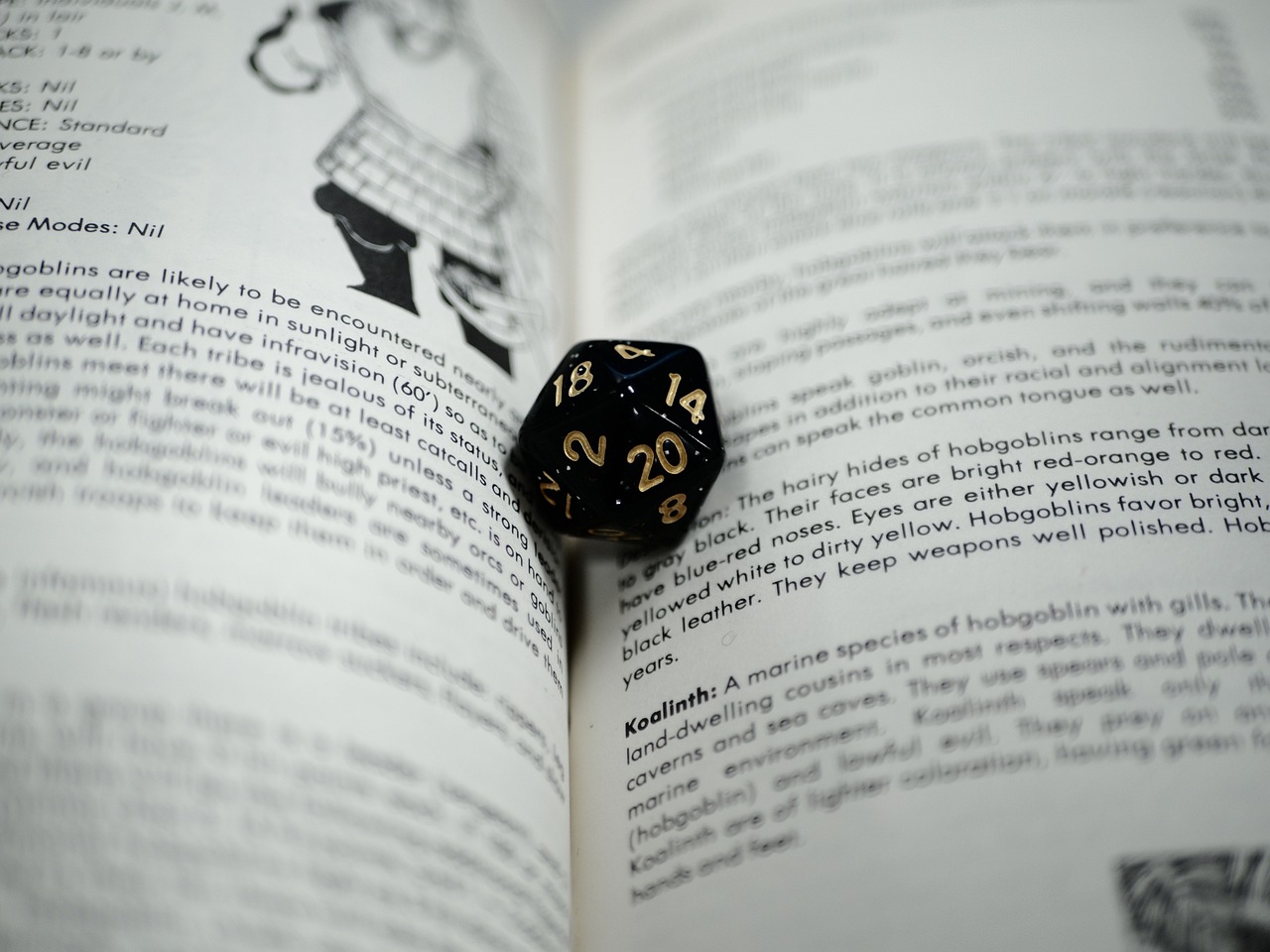
Human Perception of Randomness
When it comes to understanding randomness, humans often find themselves in a bit of a pickle. Our brains are wired to seek patterns and make sense of the chaos around us. This innate tendency can lead to some fascinating yet misleading perceptions about random events. For instance, when flipping a coin, many people expect a perfect 50/50 split of heads and tails over a small number of flips. However, randomness doesn't play by our rules. Just because we see three heads in a row doesn’t mean the next flip is more likely to be tails. This is a classic example of the Gambler’s Fallacy, where individuals believe that past random events influence future outcomes.
Moreover, our understanding of randomness is often clouded by cognitive biases. For example, the availability heuristic can skew our perception of how likely an event is to occur based on how easily we can recall similar instances. If we hear about a plane crash on the news, we might overestimate the probability of it happening again, despite air travel being statistically safer than driving. This disconnect between reality and perception can lead to poor decision-making, especially in high-stakes situations.
Interestingly, humans also have a tendency to see patterns where none exist, a phenomenon known as apophenia. This can manifest in various ways, such as when someone believes they can predict lottery numbers based on previous draws. In reality, each draw is independent, and the odds remain the same regardless of past outcomes. This illusion of control can be comforting, but it can also lead to risky behaviors, such as gambling beyond one's means or making uninformed financial decisions.
To further illustrate these points, consider the following table that summarizes common cognitive biases related to randomness:
| Cognitive Bias | Description |
|---|---|
| Gambler’s Fallacy | The belief that past random events affect future outcomes. |
| Availability Heuristic | Estimating the likelihood of events based on how easily examples come to mind. |
| Apophenia | Seeing patterns or connections in random data. |
In conclusion, while randomness is a fundamental aspect of probability, our perception of it can be heavily influenced by cognitive biases and logical fallacies. Understanding these biases is crucial for making better decisions in life, whether it’s about investments, health, or even everyday choices. By recognizing that randomness often defies our expectations, we can approach situations with a clearer mindset and more informed perspective.
- What is randomness? Randomness refers to the lack of pattern or predictability in events. It means that outcomes are not determined by any prior events.
- How does perception affect our understanding of probability? Our perception can lead us to misinterpret random events, often causing us to see patterns or influences where none exist.
- Why is understanding randomness important? Grasping the concept of randomness helps in making informed decisions, especially in fields like finance and healthcare where probabilities are crucial.
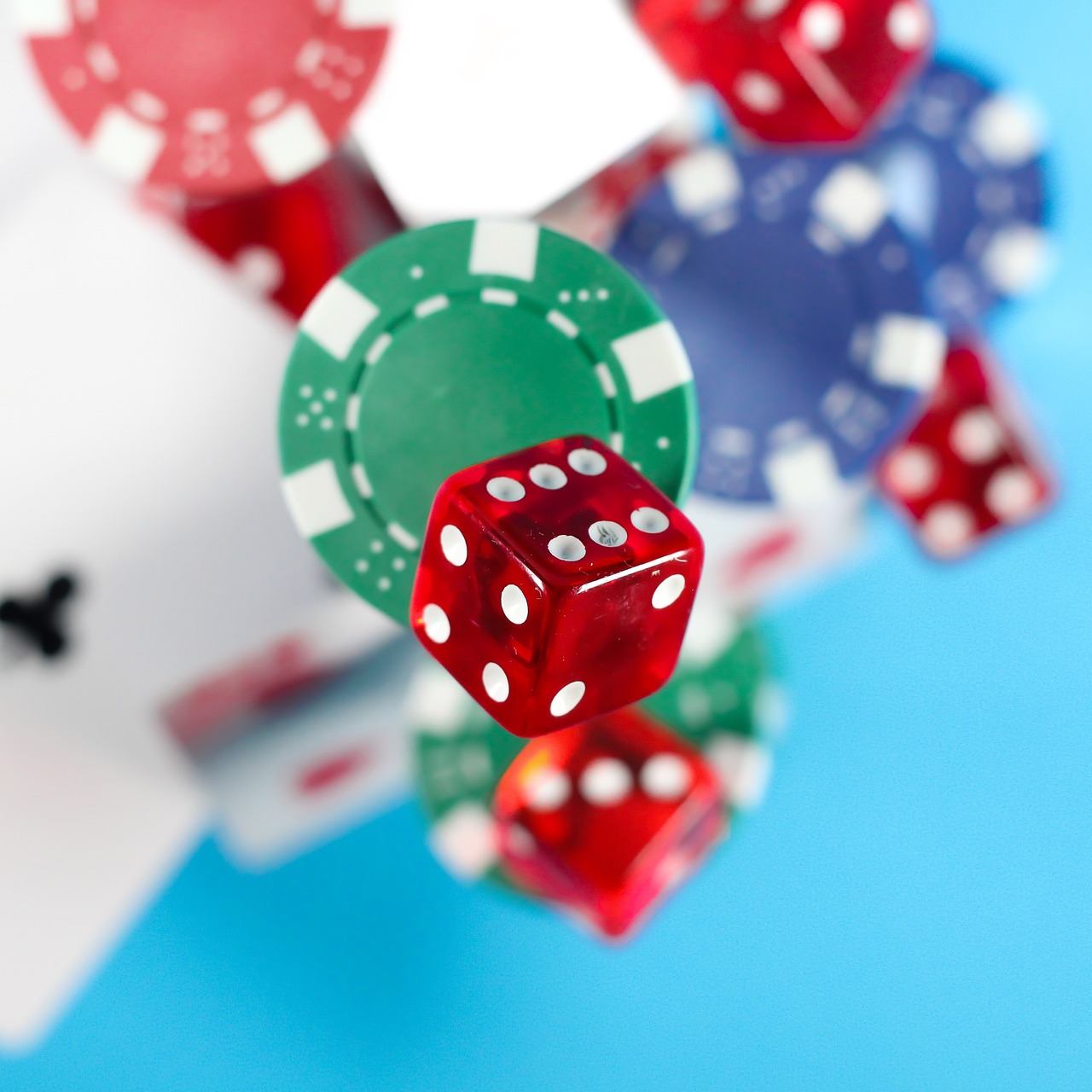
Certainty in Probability
When we think about probability, it’s easy to get lost in the whirlwind of chance and randomness. However, there’s a fascinating side to probability that revolves around certainty. In essence, certainty in probability refers to those situations where outcomes can be predicted with a high degree of confidence. Imagine tossing a coin; while the outcome of each flip is uncertain, if you flip it enough times, you can be nearly certain that it will land on heads or tails about 50% of the time. This predictability is what makes probability an invaluable tool in various fields.
In many scenarios, especially in structured environments, probabilities can lead to outcomes that feel almost certain. For instance, consider a game of dice. If you roll a six-sided die, the probability of landing on any given number is 1 in 6. However, if you roll the die multiple times, you can predict with certainty that each number will eventually show up, given enough rolls. This is where the beauty of probability shines—while individual events may be uncertain, collective outcomes can be remarkably predictable.
Let’s explore some scenarios where certainty in probability plays a significant role:
- Insurance: Insurance companies use probability to assess risks and determine premiums. They analyze vast amounts of data to predict the likelihood of claims, leading to a high degree of certainty in their financial models.
- Quality Control: In manufacturing, probability helps ensure product quality. By testing samples, companies can be confident about the quality of batches, significantly reducing the risk of defects.
- Sports Analytics: Teams analyze player performance data to predict outcomes of games. This statistical approach provides certainty in decision-making, from player selection to game strategies.
These examples illustrate how probability can lead to certainty in various fields. However, it’s crucial to understand that while probability can provide a framework for predicting outcomes, it does not guarantee them. There are always variables at play, and unforeseen circumstances can alter expected results.
In summary, certainty in probability is about recognizing patterns and making informed decisions based on statistical evidence. It allows us to navigate through uncertainty with a clearer lens, enhancing our ability to predict and prepare for future events. Whether in finance, healthcare, or everyday life, understanding this aspect of probability empowers us to make choices that align with our goals and expectations.
1. What is the difference between probability and certainty?
Probability refers to the likelihood of an event occurring, while certainty indicates a state where an outcome is predictable and assured.
2. Can probability lead to absolute certainty?
No, probability can provide a high level of confidence in predictions, but it does not guarantee outcomes due to the inherent randomness of events.
3. How is probability used in everyday life?
Probability is used in various aspects of daily life, from making decisions based on risk assessment to predicting weather patterns and even in game strategies.
4. Can understanding probability improve decision-making?
Absolutely! A solid grasp of probability can enhance your ability to make informed choices by evaluating risks and potential outcomes more effectively.
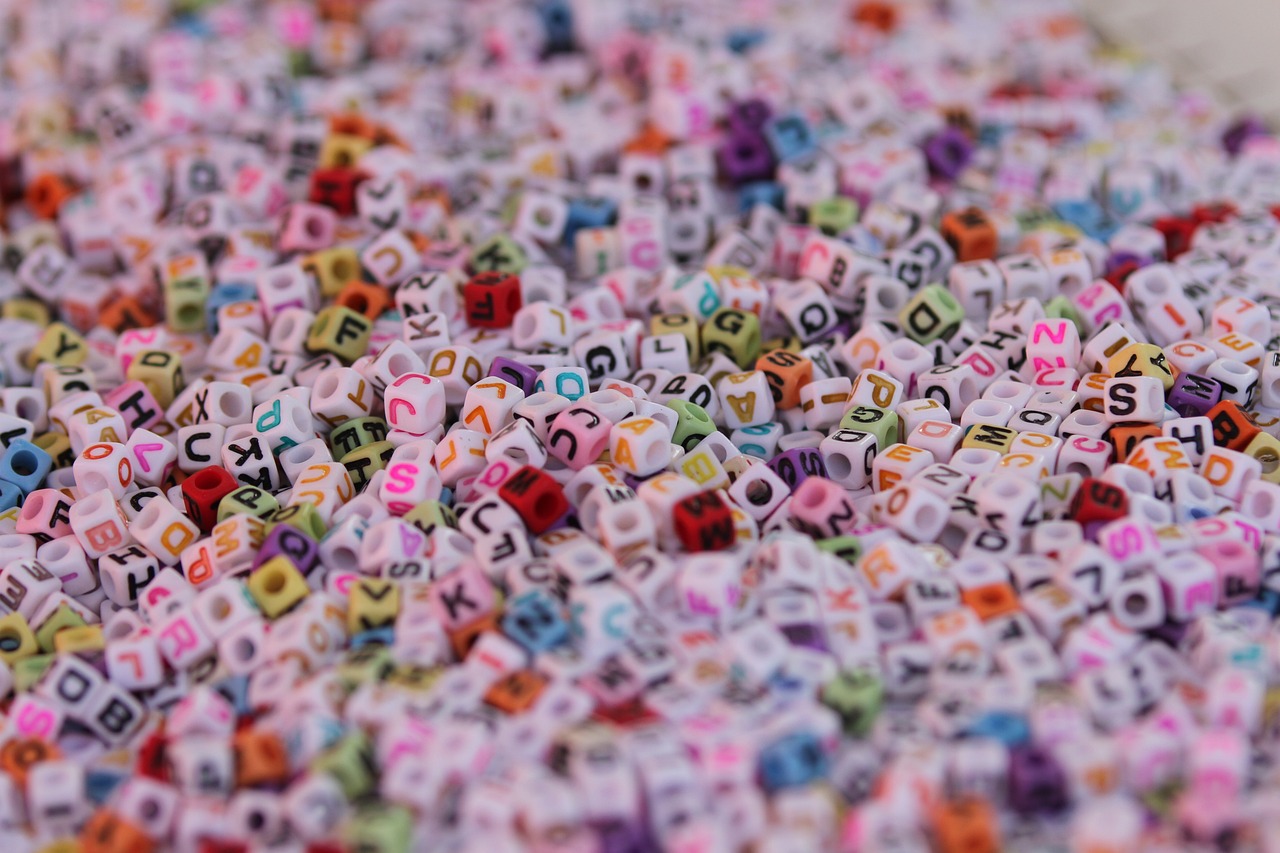
Applications of Probability
Probability is not just a theoretical concept; it has real-world applications that permeate various fields, influencing decisions and outcomes in ways we often take for granted. From finance to healthcare, understanding probability can empower individuals and organizations to navigate uncertainty with greater confidence. Imagine you're an investor trying to decide whether to buy stocks in a company. You wouldn't just flip a coin to make your decision, right? Instead, you'd analyze data, assess risks, and use probability to forecast potential returns. This is just one example of how probability shapes our everyday choices.
In finance, probability is a cornerstone of risk assessment. Investors rely on probability models to evaluate the likelihood of different outcomes, helping them make strategic decisions. For instance, consider a scenario where an investor is contemplating two different stocks:
| Stock | Probability of Gain (%) | Probability of Loss (%) |
|---|---|---|
| Stock A | 70 | 30 |
| Stock B | 50 | 50 |
In this table, Stock A shows a higher probability of gain compared to Stock B. This information helps investors weigh their options, guiding them toward more informed choices. By analyzing these probabilities, investors can create a diversified portfolio that maximizes returns while minimizing risks.
Moving on to the healthcare sector, probability plays a critical role in predicting health outcomes and assessing treatment efficacy. Medical professionals utilize probability to evaluate the likelihood of various health conditions based on patient data. For example, when determining the risk of a patient developing a certain disease, doctors might consider factors such as age, family history, and lifestyle choices. This is where the concept of Bayesian probability comes into play, allowing physicians to update their predictions as new information becomes available.
Consider a scenario where a doctor is evaluating a patient for heart disease. The probability of the patient having heart disease might initially be assessed at 10%. However, if the patient has a family history of heart disease, this probability could increase significantly. The doctor can then use this updated probability to make more tailored recommendations, such as lifestyle changes or further testing.
In addition to finance and healthcare, probability finds applications in various other fields, including:
- Marketing: Companies use probability to analyze consumer behavior and predict purchasing trends.
- Sports: Coaches and analysts rely on statistical models to forecast game outcomes and player performances.
- Weather Forecasting: Meteorologists use probability to predict weather conditions, helping people prepare for storms or sunny days.
As we can see, probability is not merely an abstract concept; it is a practical tool that helps us make sense of the world around us. By applying probabilistic thinking, we can navigate uncertainty, make informed decisions, and ultimately improve our chances of success in various domains.
Q: What is probability?
A: Probability is a mathematical measure that quantifies the likelihood of an event occurring, expressed as a number between 0 (impossible) and 1 (certain).
Q: How is probability used in everyday life?
A: Probability is used in various aspects of daily life, from making financial investments to assessing risks in healthcare and predicting weather conditions.
Q: Can probability guarantee outcomes?
A: No, probability cannot guarantee outcomes; it only provides a measure of likelihood. Events can still occur unpredictably, even with high probabilities.
Q: How do cognitive biases affect our understanding of probability?
A: Cognitive biases can lead individuals to misinterpret probabilities, often causing them to overestimate or underestimate risks based on personal experiences or beliefs.

Probability in Finance
In the world of finance, probability serves as a guiding compass, helping investors navigate the often turbulent waters of market fluctuations. When making investment decisions, understanding the likelihood of various outcomes can mean the difference between profit and loss. Imagine you’re at a casino, faced with a roulette wheel. The odds of landing on red or black can be calculated, and knowing these odds allows you to make informed bets. Similarly, in finance, probability allows investors to assess risks, returns, and the overall viability of their investments.
One of the primary applications of probability in finance is in the assessment of risk management. Investors use probability models to evaluate the potential risks associated with different investment opportunities. For instance, they might analyze historical data to determine the likelihood of a stock's price rising or falling. This analysis helps them to make decisions that align with their risk tolerance and financial goals.
To illustrate this, consider the following table that summarizes common financial instruments and their associated probabilities of risk and return:
| Financial Instrument | Risk Level | Expected Return |
|---|---|---|
| Stocks | High | 7-10% |
| Bonds | Medium | 3-5% |
| Real Estate | Medium | 5-8% |
| Cash Equivalents | Low | 1-2% |
As shown in the table, different financial instruments come with varying levels of risk and expected returns. Investors must weigh these probabilities against their own financial objectives. For example, someone seeking high returns might gravitate towards stocks, despite their higher risk level, while a more conservative investor might prefer bonds or cash equivalents.
Another critical aspect of probability in finance is its role in portfolio diversification. By investing in a mix of assets, investors can reduce the overall risk of their portfolios. The idea is that while one asset may underperform, another might excel, balancing the overall performance. Probability plays a vital role in determining the optimal mix of assets that minimizes risk while maximizing potential returns.
Furthermore, financial analysts often utilize Monte Carlo simulations—a statistical technique that employs probability distributions to forecast potential outcomes of investments. This method allows analysts to simulate thousands of different scenarios and assess the likelihood of various results, providing a more comprehensive view of potential risks and rewards.
In conclusion, the application of probability in finance is not just about crunching numbers; it’s about making informed decisions that can lead to financial success. Understanding the principles of probability empowers investors to strategically evaluate risks, optimize their portfolios, and ultimately navigate the complexities of the financial markets with greater confidence.
- What is the role of probability in investment strategies?
Probability helps investors assess the risks and potential returns of various investment strategies, allowing them to make more informed decisions.
- How does diversification relate to probability?
Diversification uses probability to reduce overall portfolio risk by spreading investments across different assets, minimizing the impact of any single investment's poor performance.
- What are Monte Carlo simulations?
Monte Carlo simulations are statistical techniques that use probability distributions to forecast potential outcomes and assess risks in financial investments.

Probability in Medicine
When we think about medicine, we often imagine doctors in white coats, stethoscopes around their necks, and patients seeking healing. But behind this everyday scene lies a complex world where probability plays a crucial role in shaping outcomes and guiding decisions. In the realm of healthcare, probability isn't just a number; it's a lifeline that helps medical professionals assess risks, predict outcomes, and tailor treatments to individual patients.
Imagine walking into a doctor's office for a routine check-up. The doctor may look at various factors—your age, family history, lifestyle choices, and current symptoms—to estimate the likelihood of certain conditions. This is where probability comes into play. By analyzing data from previous cases, physicians can determine the probability of you developing a specific illness, allowing them to take proactive measures. For instance, if you’re a smoker, your doctor might inform you that you have a higher probability of developing lung cancer compared to non-smokers. This information is vital as it not only raises awareness but also enables early intervention.
Moreover, probability is essential in clinical trials, where new treatments are tested for efficacy and safety. Researchers use statistical models to determine the likelihood of a treatment being successful. Consider a clinical trial for a new cancer drug. Researchers might find that in a sample of 100 patients, 70 responded positively to the treatment. This leads to a probability of 70% for the drug's effectiveness in the general population with similar conditions. Such findings are pivotal as they help inform healthcare providers and patients about potential treatment options.
Additionally, probability aids in understanding the risks associated with various medical procedures. Before undergoing surgery, patients are often informed about the potential complications and their associated probabilities. For example, a surgeon might explain that there is a 5% chance of infection post-surgery. This information empowers patients to make informed decisions about their healthcare. It’s akin to flipping a coin—while you know there’s a 50/50 chance of landing heads or tails, understanding the 5% risk of infection allows you to weigh the benefits against the potential downsides of the procedure.
In the context of public health, probability is used to track and predict disease outbreaks. Epidemiologists rely on statistical models to forecast the spread of infections, such as during a flu season or a pandemic. By analyzing previous data, they can estimate the probability of an outbreak occurring in specific regions, guiding health authorities in resource allocation and preventive measures. This proactive approach is similar to preparing for a storm; just as meteorologists use weather patterns to predict a hurricane, epidemiologists use probability to anticipate health crises.
In conclusion, probability in medicine is not merely a theoretical concept; it is a practical tool that enhances patient care, informs treatment decisions, and shapes public health strategies. By understanding and applying probability, healthcare professionals can navigate the uncertainties of medicine, ultimately leading to better patient outcomes and a healthier society.
- How is probability used in medical decision-making?
Probability helps physicians assess risks and predict outcomes, allowing for informed decisions regarding patient care. - What role does probability play in clinical trials?
In clinical trials, probability is used to evaluate the likelihood of a treatment's success based on statistical analysis of patient responses. - Can probability predict disease outbreaks?
Yes, epidemiologists use probability models to forecast the spread of diseases and plan public health responses accordingly. - How can patients benefit from understanding probability?
By understanding probability, patients can make informed decisions about their health, weighing the risks and benefits of treatments and procedures.
Frequently Asked Questions
- What is probability?
Probability is a mathematical measure that quantifies the likelihood of a particular event occurring. It ranges from 0 (impossible event) to 1 (certain event), helping us understand and predict outcomes in various scenarios.
- How does chance differ from certainty in probability?
Chance refers to the unpredictability of events, while certainty indicates predictable outcomes. In probability, chance involves randomness and uncertainty, whereas certainty implies that we can reliably anticipate results based on known factors.
- Can randomness affect our understanding of probability?
Absolutely! Randomness plays a crucial role in probability, often leading to unexpected outcomes. Our brains sometimes struggle to grasp this randomness, which can result in cognitive biases that skew our perception of how likely an event is to occur.
- What are some examples of random events in nature?
Examples include weather patterns, the occurrence of earthquakes, and the distribution of species in an ecosystem. These events often display inherent randomness, making them complex and challenging to predict accurately.
- How is probability used in finance?
In finance, probability is essential for assessing risks and potential returns. Investors rely on probability models to make informed decisions, weighing the likelihood of various outcomes to strategize their investments effectively.
- What role does probability play in medicine?
Probability is vital in medicine for predicting health outcomes and assessing treatment efficacy. Medical professionals use statistical models to understand risks associated with diseases and the potential benefits of various treatment options.
- Why is understanding probability important in everyday life?
Understanding probability can improve decision-making by allowing individuals to evaluate risks and benefits more effectively. Whether it's gambling, investing, or even making health-related choices, a grasp of probability helps navigate uncertainty.











